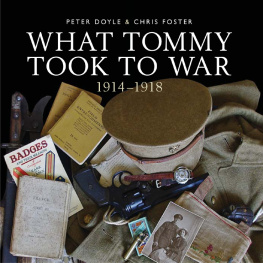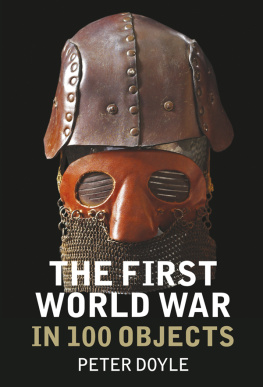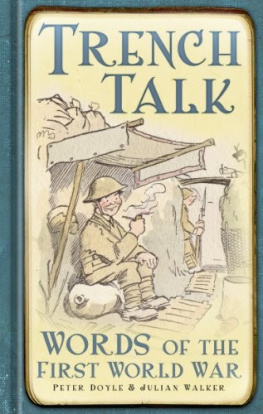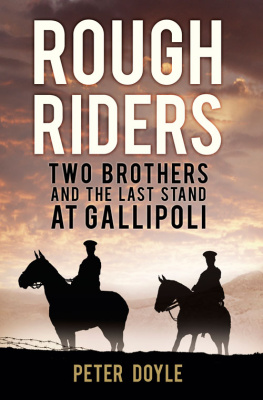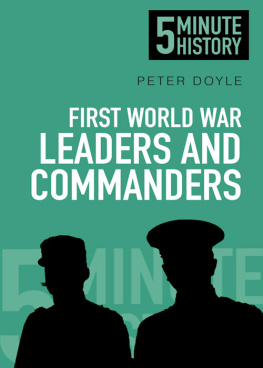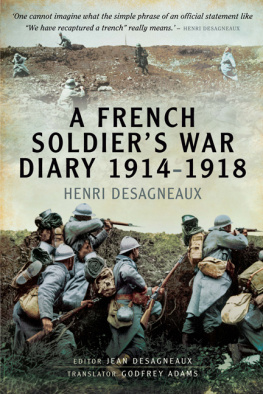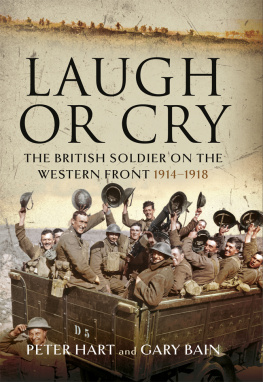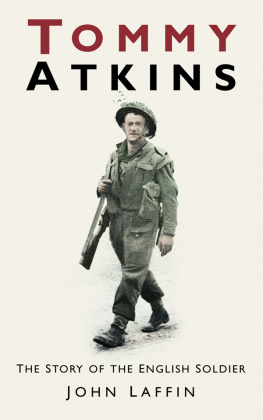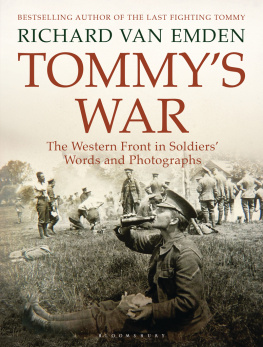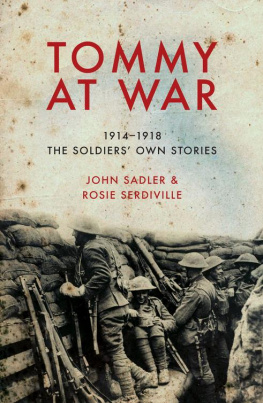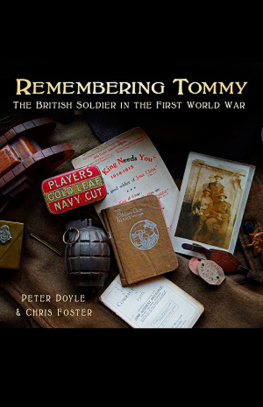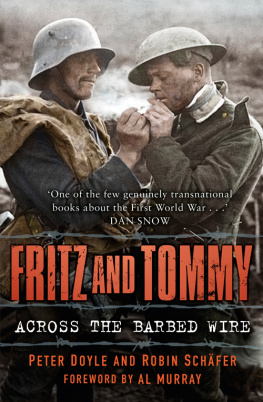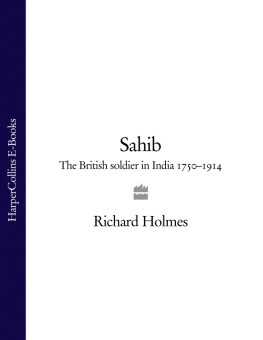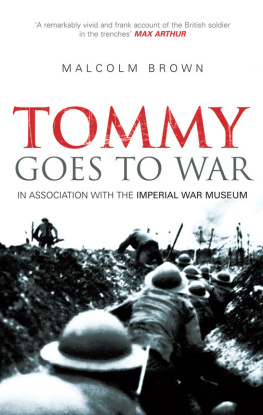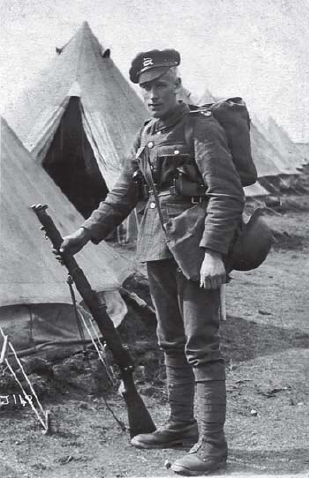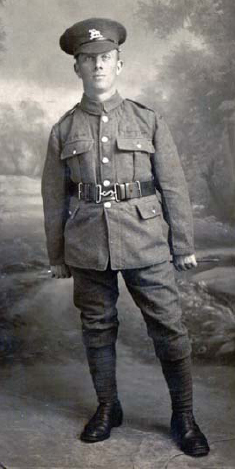WHAT TOMMY TOOK TO WAR 19141918
Peter Doyle and Chris Foster
SHIRE PUBLICATIONS
CONTENTS
THE GREAT WAR AND TOMMY ATKINS
The British Soldier of the First World War almost universally referred to as Tommy Atkins by the public fought campaigns across three continents. When the war commenced he was very much a regular soldier: highly trained, well equipped, and capable of facing even a most determined enemy. Arriving in France in August 1914, the British Expeditionary Force was composed of regulars; but by the end of the year, dwindling in numbers, they were bolstered by territorials part-time soldiers who had originally signed up only for home defence. Most volunteered for overseas service at the outbreak of war, and were formed into First Line territorial battalions to fight in France. With Lord Kitchener all too aware that the war would be a long one, his direct call for volunteers in 100,000 tranches was instrumental in supplying the manpower of Britains armies from late 1915 onwards. It was the Kitchener volunteer who would fight on the Somme in 1916, but arguably, it was conscription that created the army that won the war in 1918, a function of the Military Service Act of 1916. In all cases, men came from all walks of life and from all backgrounds.
Starting from an initial number of just six regular infantry divisions (1st6th) in 1914, the War Office assembled a further six regular divisions, thirty New Army divisions, twenty-nine Territorial divisions, a Yeomanry division, three Home Service divisions, and one compiled from Royal Naval Reservists the Royal Naval Division. Of this total of seventy-six available, sixty-five would see action overseas. In addition to the infantry, there were three cavalry divisions, comprising around nine thousand men. Each infantry division was made up of almost twenty thousand men, of whom the greatest number, comprising in the early part of the war some twelve thousand men divided between three infantry brigades (in turn composed of three infantry battalions each), were infantry proper. The remainder was composed of the fighting arms such as the Artillery and Engineers (making up some five thousand men), and the Services, such as the Army Service Corps required to supply the needs of the division in the field and the Royal Army Medical Corps expected to support and aid the sick and wounded. And there were many other services, all vital to the British war effort.
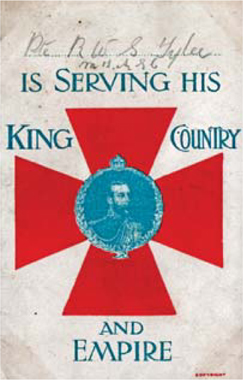
Serving his King, Country and Empire: a card displayed in the window of a family house. Private Tylee, a motor transport driver, survived the war.
A soldier of the Western Front: Private Herbert Longthorne pictured in 1918. Private Longthorne served in the 7th (Rifle) Battalion, West Yorkshire Regiment, joining the army on 2 November 1917 at the age of eighteen. He was wounded exactly one year later, to the day just nine days before the Armistice. He carries 1914-pattern leather equipment and the SMLE rifle.
For the most part, the Western Front the western theatre of operations for Imperial Germany demanded most attention and consumed men and materiel in ever increasing numbers. In late 1914 the Western Front became a continuous line of trenches from Switzerland to the North Sea, 475 miles across varied terrain; and by the end of the war British and Empire troops occupied some 120 miles of the front, in the historically strategic zone that straddled the Franco-Belgian border, extending southwards deep into Picardy. Engaged from August 1914 at the Battle of Mons, the British Expeditionary Force was to grow in size and stature to become the backbone of the Allied effort in the closing months of 1918 in the campaigns that defeated Imperial Germany with 5,399,563 Empire troops employed on the Western Front alone, the vast majority from the United Kingdom.
Away from the Western Front, the British soldier was engaged at Gallipoli, in a costly and unsuccessful attempt to defeat the Ottoman Empire in European Turkey. The campaign lasted from April 1915 to January 1916 and claimed the second biggest total of British casualties at 112,040; it ended in ignominious withdrawal. The Ottomans were engaged elsewhere across the Middle East: in Mesopotamia (modern Iraq), an initially successful British advance past Basra led to a crushing surrender to the Turks at Kut-al-Amara in 1916, which would not be reversed until 1918; in Palestine and the Arabian peninsula, the scene of the exploits of T. E. Lawrence (Lawrence of Arabia), the British would be more successful, and the Ottomans were to sue for peace in late October 1918 after Edmund Allenby had taken Jerusalem.
A soldier of the Queens (Royal West Kent Regiment) in c. 1916. He wears the typical serge service dress and stiff cap.
A soldier of the Gordon Highlanders, with kilt, sporran and glengarry, c. 1915. He wears Highland shoes and spats impractical in the front line.
At Salonika in mainland Greece, the Mediterranean Expeditionary Force (MEF) faced the Bulgarians and their German allies from 1916. Here, more men were lost to disease than as battle casualties. In 1918 the MEF participated in a co-ordinated offensive over difficult terrain, forcing the capitulation of Bulgaria in September 1918 the first of the Central Powers to surrender. There were numerous other theatres in South West Africa, for example, and to bolster the hard-pressed Italians in the valley of the Isonzo in Slovenia. Further afield, in the opening days of the war, there was Tsingtao, in China, and at its close Archangel, in northern Russia. The British soldier went wherever he was needed.
The khaki uniform worn by the British soldier was first introduced in 1902, a development of the cotton Service Dress of khaki used in the Boer War of 18991902. This serge uniform was designed to suit all purposes; when the army put its ceremonial red coats into storage at the outbreak of the war, it would be some time before they were seen again. The Service Dress jacket was loose-fitting, with five brass buttons bearing the royal arms, a turned-down collar, and patches at the shoulder to bear the extra wear from the position of the rifle butt in action. It had a pair of box-pleated patch pockets at the upper chest, and a pair of deep pockets let into the tunic skirt. Shoulder straps bore regimental insignia in the form of brass shoulder titles. Accompanying the jacket was a pair of trousers finished in wool serge with a narrow leg, and worn with puttees, while mounted soldiers wore breeches tightly laced over the calves.
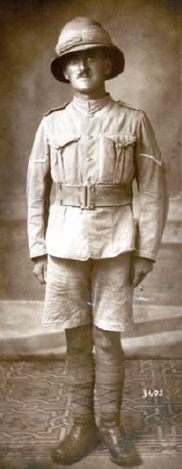
A soldier wearing Khaki Drill and a Wolseley-pattern helmet, Egypt, c. 1917.
Not all soldiers wore woollen Service Dress, however; a cotton version, known as Khaki Drill, was worn in places with a hot climate such as Mesopotamia or Gallipoli, topped off with a Wolseley-pattern cork helmet for sun protection.

